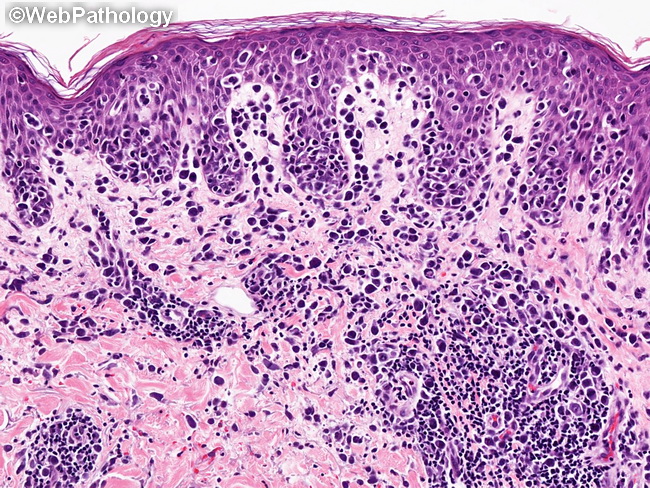Mycosis Fungoides : Epidermotropism


Comments:
Epidermotropism is a histologic hallmark of mycosis fungoides (MF). It refers to the propensity of lymphocytes to colonize epidermis. Atypical lymphocytes palisade along dermal-epidermal junction. They can also be present within intraepidermal vesicles (Pautrier microabscess). Epidermotropism is related to the stage of the disease and the degree of differentiation of lymphocytes. It is readily apparent in patch and plaque stages and may be lost in tumor stage when large transformed cells are predominant. Epidermotropism may also be inconspicuous if the skin biopsy is taken after topical treatment. Epidermotropism, while commonly seen in MF, is not diagnostic of MF and may also occur in adult T-cell leukemia/lymphoma, actinic reticuloid, and drug-induced pseudolymphomas. Epidermotropism of cutaneous T-cell lymphomas does not show prominent spongiosis or vesiculation. These are important distinguishing features from intraepidermal lymphocytic infiltrates seen in eczema/dermatitis.



